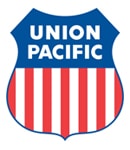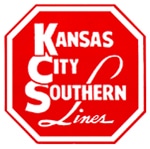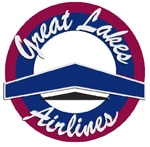
My reading of our history leads me to a couple of conclusions. SMART has a strong base on which to build its future. Its leadership is as resilient, creative and unstoppable as ever. We owe much to the generations of leaders over the past 33 years—leaders who fought hard to protect our interests and our families’ welfare. If not for forward-thinking leaders like Edward J. Carlough, we would not be where we are today. General President of the Sheet Metal Workers’ International Association between 1970 and 1993—a generally lean period for union construction workers—he fully believed that God helped those who helped themselves. “That’s why we created SASMI, a national training fund, a national pension fund, and NEMI,” he noted. And that’s why Engineering News- Record named him Construction Man of he Year in 1975, a time when the Business Roundtable was pushing open-shop construction, and doublebreasted union/nonunion firms were on the rise. “I’ve never held my breath waiting for someone to help me,” he said, “and I never will.”
Arthur Moore, who took over as IA president in 1993, provided strong financial leadership and made hard decisions to help strengthen the National Pension Fund. “Our goal must be to preserve our pensions,” he told the membership. Michael J. Sullivan became the next General President, placing a high priority on the union’s organizing program to help build membership and increase contributions to the pension fund. He also saw the advantages of mergers, which ultimately led to the decision by the United Transportation Union to join in forming the International Association of Sheet Metal, Air, Rail and Transportation Workers (SMART).
The experiences of these recent General Presidents have greatly influenced me throughout my career. Each had a different approach in leading the union, but they all had the same dedication and understanding that the members come first in all deliberations. It is now my responsibility to enhance the future of this great union by successfully concluding the merger of our union and promoting the value of our members’ expertise, whether in construction, manufacturing, or transportation.
As this year comes to a close, I extend season’s greetings to you, your family, and friends and wish you the very best of happiness, good health, and success in the coming year.
Fraternally yours,
Joseph J. Nigro
Year: 2014
In a fundamental shift in the way tour buses are regulated, the federal agency that oversees the companies is implementing a long-sought rule to aggressively go after and shut down those that repeatedly violate safety laws, endangering the lives of tour bus riders as well as motorists and passengers sharing the road.
The move comes a year after a devastating Southern California tour bus crash that left 8 people dead and 32 injured. That crash prompted a year-long NBC4 I-Team investigation which revealed a disturbing pattern of potentially life-threatening tour bus company safety violations.
Read the complete story at NBC4.
The Los Angeles County Metropolitan Transportation Authority announced last week that it was considering a number of fare-restructuring options that would increase fares, change its current transfer policy and help the bus and rail operator address its mounting operating deficits.
Currently, all Metro rides are $1.50 per one-way ticket, a fee that officials say only covers 26% of the cost of operating the buses and trains. In a report released Friday, Metro asked for the public’s input on two options, the first of which calls for a gradual increase in base fare to $1.75 for the next four years with an eventual rise to $2.25 after eight years. A second option incorporates dual pricing for off-peak and peak hour riding with a final base fare of $3.25.
Read the complete story at the Long Beach Post.
The U.S. Class I workforce expanded slightly in November, then contracted a bit in December, according to employment data recently compiled and released by the Surface Transportation Board (STB).
As of mid-November 2013, the large U.S. roads employed 163,199 people, up less than 0.1 percent from October’s level and 0.3 percent from November 2012’s count.
Read the complete story at Progressive Railroading.

The railroad also reported that revenue for the quarter increased by five percent to $3 billion. The increase was due to merchandise and intermodal markets.
“Supported by the strength of an expanding economy, we delivered six percent volume growth in the quarter, despite another sharp decline in coal,” said Michael J. Ward, who acts as chairman, president and chief executive officer for the company.
Annual net earnings for 2013 came in at $1.83 per share, up from 2012’s $1.79 per share. Revenue increased for the year by two percent to $12 billion, a record for the company. Operating income came in at $3.5 billion and the operating ratio increased to 71.1 percent for the year.
Operating ratio is a railroad’s operating expenses expressed as a percentage of operating revenue, and is considered by economists to be the basic measure of carrier profitability. The lower the operating ratio, the more efficient the railroad.
Norfolk Southern published its fourth quarter and full-year earnings for 2013 January 22. The railroad reports a fourth quarter net income of $513 million or $1.64 per diluted share. Net income was 24 percent higher than recorded earnings for the same quarter 2012. Fourth quarter earnings were also up $31 million over third quarter earnings for the same year.
NS reported that the operating ratio improved five percent to 69.4 percent for the quarter. Operating revenues for the railroad totaled $2.9 billion, up seven percent from the same quarter last year. Income from railway operations was up 23 percent at $881 million.
For the year 2013, operating revenues for the railway reached $11.2 billion, up two percent over 2012. Income from railway operations came in at $3.3 billion for the year, four percent higher than last year. Net income rose nine percent higher than the previous year at $1.9 billion. Diluted earnings per share also saw an improvement of 12 percent at $6.04. Overall, the railway’s operating ratio improved by one percent to 71.0 percent for the year.
“Norfolk Southern’s team of safety and service-oriented employees drove our record-setting fourth quarter results through increased productivity, efficient network operations, and continued revenue gains,” Wick Moorman, NS CEO, said. “In 2014, we plan to invest $2.2 billion, a 12 percent increase over 2013, to maintain safe railway operations, purchase locomotives and freight cars, and support growth and productivity initiatives.

The railroad reported a net income of $1.2 billion or $2.55 per diluted share for the fourth quarter, a 16 percent increase over last year. Last year’s results for the same quarter were only $1 billion or $2.19 per diluted share.
Operating revenue saw an increase of seven percent to more than $5.6 billion. The same quarter last year only saw an operating revenue of $5.25 billion. Operating income was up 14 percent, totaling $1.97 billion. UP’s operating ratio was a fourth quarter record at 65.0 percent.
“For the first time in six quarters, we reported overall volume growth, despite significantly weaker coal shipments,” said CEO Jack Koraleski. “The fourth quarter wrapped up another tremendous year for Union Pacific, with our overall financial performances exceeding all previous milestones.”
For 2013, UP reported a net income of $4.4 billion or $9.42 diluted share, up from 2012’s reported net income of $3.9 billion or $8.27 per diluted share. Operating revenue saw a record $21.96 billion for the railroad in 2013. Operating income also saw an increase of 10 percent, coming in at more than $7.4 billion. The 2013 operating ratio for the railroad was also a new record, coming in at 66.1 percent.
“As we look at 2014, we see signs that the economy is slowly strengthening. We’re well-positioned for economic growth and are confident in our ability to deliver on our customer’s growing transportation needs,” Koraleski said. “We’ll continue our unrelenting focus on both safety and service to our customers. We strongly believe in the power and potential of the Union Pacific franchise to drive even greater financial performance and shareholder returns in the years to come.”

Net income totaled $114 million or $1.03 diluted earnings per share for the quarter, a 12 percent increase over the same quarter last year. They also saw a two percent increase in carloads for the fourth quarter.
KCS’s operating income also saw an increase to $196 million for the quarter, a full 13 percent higher than 2012. Operating ratio came in at 68.1 percent for the railroad. Operating expenses also increased by six percent to $420 million for the quarter.
Full year 2013 revenue came in at a record $2.4 billion, up six percent over 2012. Carloads for the year increased two percent to 2.2 million. Operating income for the year is being reported at $739 million, an increase of 10 percent over 2012. The operating ratio for KCS was 68.8 percent for the year, a 1.1 point improvement over 2012.
“The year 2013 proved to be another very good year for Kansas City Southern,” said President and CEO David L. Starling. “2013 marks the fourth consecutive year KCS has recorded a double-digit percentage increase in its adjusted earnings per share. We expect to maintain our excellent growth momentum in 2014 and beyond.”

Since taking over in June 2012, Harrison has cut jobs and shut rail yards to bolster profit and close the operations gap with larger rival Canadian National Railway, his former employer. CP reported record operating ratio, a costs-to-revenue measure of efficiency, for the last quarter and said it expects more improvement this year. The railroad’s operating ratio improved to a record 65.9 percent in the quarter from 74.8 percent a year earlier, and the company said it’s targeting 65 percent or lower this year.
“This was a solid quarter, with decent operating numbers,” Jason Sei
dl, a Cowen & Co. analyst in New York who rates the shares market perform, said in a telephone interview. “The guidance is for a minimum of 30 percent growth. This year they did much better than their original guidance, so if they do that again this year, they will be well above the consensus.”
Canadian Pacific stock shares jumped 4.3 percent to C$165 at the close in Toronto, the biggest single-day increase since Oct. 23. The stock has gained 2.7 percent this year.
The 69-year-old Harrison, who came out of retirement to become Canadian Pacific’s CEO, insisted he still plans to lead the company for another two years before handing the reins to Chief Operating Officer Keith Creel.

The railroad, based in Montreal, was helped by strong energy markets. Revenue from the transport of petroleum and chemicals jumped 22% in the fourth quarter, while revenues from metals and minerals and forestry products also made double-digit gains.
Revenue increased 8 percent to C$2.745 billion and operating expenses rose 5 percent to C$967 million. The company’s operating ratio rose to 64.8 percent from 63.6 percent. The operating ratio is the percentage of operating revenue consumed by operating costs, so an increase indicates a decline.
“Key operating and service metrics remained solid, and we continued to drive incremental improvement in our broad safety record,” Chief Executive Claude Mongeau said in a statement.
“CN sees good opportunities in 2014 in a number of markets, including intermodal, oil-and-gas-related commodities, Canadian and U.S. grain, and commodities related to the recovery in the U.S. housing market,” Mr. Mongeau said.

Following the New York Metropolitan Transportation Authority’s Jan. 15 announcement that it is rejecting a proposed series of wage increases for unionized employees on the Long Island Rail Road, SMART Transportation Division General Committee of Adjustment GO 505 has signaled that its members are prepared to strike as early as March 21.
The wage increases and other recommendations were the findings of Presidential Emergency Board 244, which was appointed by President Barack Obama to settle a long-running dispute between LIRR management and its unionized employees.
“With the guidance and support of our SMART International Union, along with the teamwork and solidarity of our brothers and sisters from the sheet metal side of SMART, the Transportation Communications Union and the National Conference of Firemen & Oilers, 70 percent of the represented workforce on LIRR is prepared to deliver on the actions allowable by the process of self-help, as per the Railway Labor Act,” said GO 505 General Chairperson Anthony Simon.
“In addition, we have the support of Transport Workers Union Local 100, which demonstrates an overwhelming sign of solidarity from labor to MTA.”
“Due to the MTA’s unwillingness to accept the recommendations of PEB 244, and without their request for a second board, our labor coalition is prepared to strike as early as March 21. While we have said time and time again that this is not what labor wants for the riders at the MTA, it will be the sole result of the MTA’s unwillingness to take the next step.”
The three board members recommended that the LIRR pay wage increases totaling 18.4 percent over six years (2.9 percent per year) and that employees begin contributing to health insurance premium costs. After factoring in the recommended employee health insurance contributions, the board’s recommendations will produce net wage increases of 2.5 percent per year.
The board’s wage recommendations are retroactive to the first year of the contract dispute, which has been ongoing for more than three years. The board rejected MTA’s demand that workers accept three years of net zero wage increases, followed by two, two-percent increases over five years.
The board also rejected MTA’s demand for major concessions in pensions, including a permanent five-percent employee contribution.
In its recommendations issued Dec. 22, the PEB said the wage increases were comparable to recent commuter settlements in large cities like Chicago and Boston.
Simon said that since its Jan. 15 announcement, the MTA has refused to say if it would seek a second PEB and has declined to meet with him or leaders of any of the other affected unions in the bargaining group.
“Strong leadership requires strong action. Now is the time our SMART membership, and the membership of our supporting unions, realize that we are ready to deliver. Ready for March 21 … or with MTA action, ready for the next step.”
“We need the full support of our members and their full trust in their leadership. The-long standing battle cry for labor has never been more true, ‘progress through unity.’”
To view the complete PEB report, click here.
WASHINGTON – The U.S. Department of Transportation collects relatively small civil penalties against the railroads it regulates, as concern grows over the safety of shipping large volumes of crude oil and ethanol in tank cars long known to be deficient, federal documents show.
A McClatchy review of annual enforcement reports shows that the Federal Railroad Administration rarely fines any company more than $25,000, though it’s authorized to collect a maximum of $175,000 per violation. Some fines are as little as $250, and most settlements are substantially lower than the agency had first proposed.
Read the complete story at the Sun Herald.

SMART Transportation Division Washington State Legislative Director Herb Krohn reports that a two-person rail crew bill has been introduced in both houses of the state legislature.
H.B. 2718, introduced in the House of Representatives, has 26 sponsors. The primary sponsor is Rep. Larry Haler (R), and the first co-sponsor is Rep. Brian Blake (D).
S.B. 6473, introduced in the Senate, has 16 sponsors. The primary sponsor is Sen. Jan Angel (R) and the first co-sponsor is Sen. Don Benton (R).
The bills can be read in their entirety at http://www.leg.wa.gov/pages/home.aspx by entering the bill numbers.
Krohn said the Washington State Legislative Board is also monitoring two other House bills that affect SMART TD members.
H.B. 1620, the Contract Crew Hauler Transport Safety Bill, passed out of the House Transportation Committee Jan. 30 by a vote of 30-0, with one member absent. “This is a stronger vote than last year. The bill now moves on to the House Rules Committee and, hopefully, onto the floor for a vote by the full house very soon,” Krohn said.
H.B. 1621, the Yardmaster Hours of Service Bill, is in the House Rules Committee. “We need to get this bill pulled by members of the Rules Committee to get it to the floor,” Krohn said.
SAN FRANCISCO – The California Supreme Court ordered an appeals court Wednesday to undertake a fast-track review of two rulings that could disrupt financing of the voter-approved bullet train.
In a brief order signed by Chief Justice Tani Cantil-Sakauye, the state high court transferred a challenge to the rulings by Gov. Jerry Brown’s administration to the intermediate Court of Appeal in Sacramento and ordered written arguments to be completed by Feb. 10.
Read the complete story at the Los Angeles Times.
FORT DODGE, Iowa –
The company said it also is suspending service to Mason City in northern Iowa and in Devils Lake and Jamestown, N.D.; Ironwood, Mich.; and Thief River Falls, Minn. The airline is based in Cheyenne, Wyo.
Read the complete story at Omaha.com.